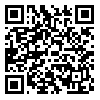Volume 6, Issue 4 (3-2018)
2018, 6(4): 81-95 |
Back to browse issues page
Download citation:
BibTeX | RIS | EndNote | Medlars | ProCite | Reference Manager | RefWorks
Send citation to:



BibTeX | RIS | EndNote | Medlars | ProCite | Reference Manager | RefWorks
Send citation to:
Poodat F, Arrowsmith C, Mikaeili Tabrizi A, Gordon A. Application of Graph Theory in Landscape Ecology The Case Study: Assessment of Habitat Connectivity within Greater Melbourne
. Iranian Journal of Applied Ecology 2018; 6 (4) :81-95
URL: http://ijae.iut.ac.ir/article-1-830-en.html
URL: http://ijae.iut.ac.ir/article-1-830-en.html
Shahid Chamran University of Ahvaz
Abstract: (9180 Views)
A new method to quantify, monitore and assess ecological structures and functions is the application of graph theory. In ecology, this theory demonstrates its suitable application in assessment of ecological connectivity. Connectivity is the structural attribute of landscape which facilitates the species movement among their habitats. Using graph theory, this paper aims to assess the connectivity of habitats within an urban landscape. Therefore, firstly the graph fundamentals, the graph-based connectivity studies, various methods, software and graph-based metrics for graph modeling were discussed. Then using this theory, the habitat network of Varanus varius was modelled within the Greater Melbourne as a weighted network incorporating nodes and active links. The connectivity of adjacent habitats was assessed using pij and flux metrics. The overall connectivity of the network was assed using DCflux Eventually the nodes were prioritized based on their importance for maintenance of network connectivity. The use of method showed that majority of highly ranked patches are located on the fringes of metropolitan Melbourne. In addition, a number of important patches are located on the urban growth boundary at North, North East and East of Melbourne that is a potential conflict between conservation plans and land use planning. Due to the ease of its application and validity of results, the use of this theory and the metric DCflux is recommended to study the species habitat networks in fragmented landscapes especially urban landscapes.
Send email to the article author
| Rights and permissions | |
 | This work is licensed under a Creative Commons Attribution-NonCommercial 4.0 International License. |







